Trajan’s Market Was The World’s First Known Shopping Mall
AncientPages.com - Located in the heart of Rome, on the Via dei Fori Imperiali opposite to the Colosseum Trajan’s market was the world’s first known shopping mall. It was a large complex with no less than 150 warehouses, shops and offices where the ancient Romans would gather to purchase goods and conduct business.
It was constructed between 107 and 110 AD by Apollodorus of Damascus, who had been a favorite choice of the imperial elite since the reign of Vespasian. He had accompanied Trajan on a number of his expeditions, and was trusted by the emperor.
Trajans' market
The market complex was extremely large and semi-circular in shape, with columns standing in a row at its border. The higher levels, some as much as six stories above the ground, were generally used for management of the markets and general office space. Additionally, right next to these offices stood a sizable warehouse.
See also:
Hypocaust – First Central Heating Invented By Ancient Romans 2,000 Years Ago
Roman Consuls Seized Power Through Intimidation, Bribery And Show Business
Most commercial activity was carried on at the lower levels, where goods including wine, oil, fruit, and vegetables could be bought and sold. The shops that stood here were known as tabernae and had wide openings on to the street and small windows.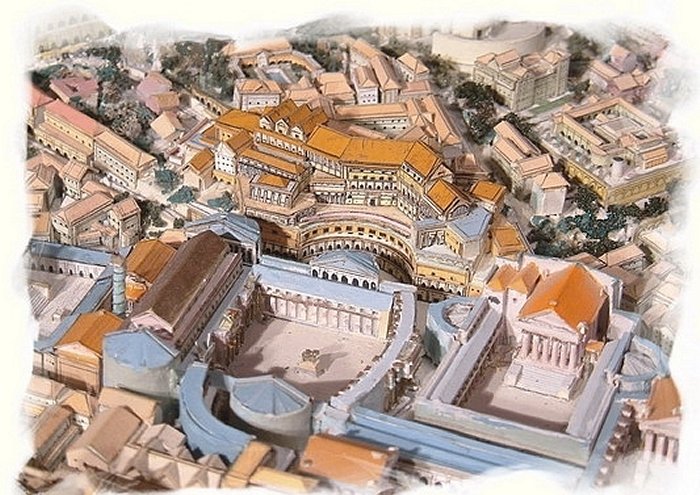
Trajan's market reconstruction.
The customer would most likely approach the shop keeper at the door and then be served there, rather than actually entering the room.
The Great Hall formed part of the lower levels of the market. Historians think this place was most likely a concert venue, perhaps also with spaces for teaching, speeches or rhetoric competitions. The arched vault of concrete that formed the market’s roof was raised on piers in order to allow sunlight to enter while still keeping rain off the shoppers below.
The market remained in active commercial use for around two centuries.
Despite many years of neglect and damages sustained during the earthquake of 1349, the complex is still in relatively good condition.
Copyright © AncientPages.com All rights reserved. This material may not be published, broadcast, rewritten or redistributed in whole or part without the express written permission of AncientPages.com
More From Ancient Pages
-
 Was Pocahontas A Real Historical Person?
Featured Stories | Feb 20, 2019
Was Pocahontas A Real Historical Person?
Featured Stories | Feb 20, 2019 -
 Ancient Roman Wine Production May Hold Clues For Battling Climate Change
Featured Stories | Jan 4, 2024
Ancient Roman Wine Production May Hold Clues For Battling Climate Change
Featured Stories | Jan 4, 2024 -
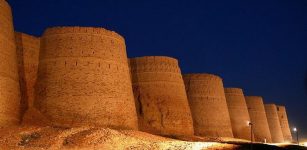 Enormous And Impressive Derawar Fort, Bahawalpur, Pakistan Will Be Restored
News | Sep 14, 2015
Enormous And Impressive Derawar Fort, Bahawalpur, Pakistan Will Be Restored
News | Sep 14, 2015 -
 Neolithic Watermelons Reveal Some Surprises About Our Ancestors
Archaeology | Aug 6, 2022
Neolithic Watermelons Reveal Some Surprises About Our Ancestors
Archaeology | Aug 6, 2022 -
 On This Day In History: David I Becomes King Of Scots – On Apr 27, 1124
News | Apr 27, 2016
On This Day In History: David I Becomes King Of Scots – On Apr 27, 1124
News | Apr 27, 2016 -
 Herculaneum Time Capsule: Ancient Scrolls With Secrets Buried Under Volcanic Ash And Stones
Civilizations | Aug 24, 2016
Herculaneum Time Capsule: Ancient Scrolls With Secrets Buried Under Volcanic Ash And Stones
Civilizations | Aug 24, 2016 -
 DNA Of Nine 13th Century Crusaders Provides A Glimpse Into Soldiers’ Life And Death
Archaeology | Apr 22, 2019
DNA Of Nine 13th Century Crusaders Provides A Glimpse Into Soldiers’ Life And Death
Archaeology | Apr 22, 2019 -
 Mysterious Anomaly In Earth’s Magnetic Field Documented On 3,000-Year-Old Mesopotamian Bricks
Archaeology | Dec 18, 2023
Mysterious Anomaly In Earth’s Magnetic Field Documented On 3,000-Year-Old Mesopotamian Bricks
Archaeology | Dec 18, 2023 -
 85 Beautiful And Rare Coptic Textiles – A Gift To Museum At Queens College
Archaeology | Apr 4, 2017
85 Beautiful And Rare Coptic Textiles – A Gift To Museum At Queens College
Archaeology | Apr 4, 2017 -
 Ensisheim Meteorite Is The Oldest Meteorite With A Precise Date Of Impact
Ancient History Facts | Jun 29, 2018
Ensisheim Meteorite Is The Oldest Meteorite With A Precise Date Of Impact
Ancient History Facts | Jun 29, 2018 -
 Mysterious Huge Megalithic Complex Of 500 Stones Discovered In Spain Could Be One Of The Largest In Europe
Archaeology | Aug 19, 2022
Mysterious Huge Megalithic Complex Of 500 Stones Discovered In Spain Could Be One Of The Largest In Europe
Archaeology | Aug 19, 2022 -
 Paleolithic Cave Dwellers And Light They Could Get In Darkness
Archaeology | Jun 21, 2021
Paleolithic Cave Dwellers And Light They Could Get In Darkness
Archaeology | Jun 21, 2021 -
 Huge Mass Grave With Remains Of Pirate Black Sam’s Crew Discovered In North America
Archaeology | Apr 3, 2018
Huge Mass Grave With Remains Of Pirate Black Sam’s Crew Discovered In North America
Archaeology | Apr 3, 2018 -
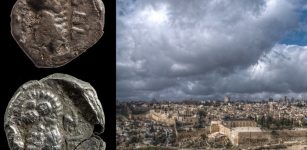 Extremely Rare And Tiny Biblical Coins Discovered Near The Temple Mount
Archaeology | May 30, 2018
Extremely Rare And Tiny Biblical Coins Discovered Near The Temple Mount
Archaeology | May 30, 2018 -
 Neanderthal DNA Still Influence Modern Human Genes – Scientists Say
Archaeology | Mar 3, 2017
Neanderthal DNA Still Influence Modern Human Genes – Scientists Say
Archaeology | Mar 3, 2017 -
 Rock Stars: How A Group Of Scientists In South Africa Rescued A Rare 500 Kg Chunk Of Human History
Featured Stories | Oct 20, 2022
Rock Stars: How A Group Of Scientists In South Africa Rescued A Rare 500 Kg Chunk Of Human History
Featured Stories | Oct 20, 2022 -
 Leonardo Da Vinci Has 14 Living Male Descendants – DNA Study Reveals
Archaeology | Jul 7, 2021
Leonardo Da Vinci Has 14 Living Male Descendants – DNA Study Reveals
Archaeology | Jul 7, 2021 -
 Denisovan Family Tree: New Branches Revealed In Ancient DNA
Archaeology | Apr 12, 2019
Denisovan Family Tree: New Branches Revealed In Ancient DNA
Archaeology | Apr 12, 2019 -
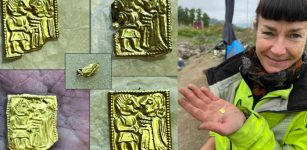 Mysterious Tiny 1,400-Year-Old Gold Foil Figures Found In Pagan Temple
Archaeology | Sep 23, 2023
Mysterious Tiny 1,400-Year-Old Gold Foil Figures Found In Pagan Temple
Archaeology | Sep 23, 2023 -
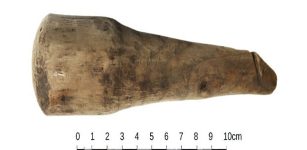 Unique Roman Artifact Discovered At Vindolanda Was More Than A Good Luck Charm
Archaeology | Feb 20, 2023
Unique Roman Artifact Discovered At Vindolanda Was More Than A Good Luck Charm
Archaeology | Feb 20, 2023


